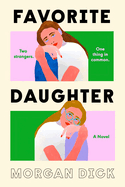
| Publisher: | Viking | |
| Genre: | Women, Psychological, Family Life, Fiction, Siblings | |
| ISBN: | 9780593832264 | |
| Pub Date: | April 2025 | |
| Price: | $30 |
| Starred | Fiction |
by Morgan Dick
The premise of Favorite Daughter, Morgan Dick's debut novel, is an uncomfortable one. Mickey's absent, alcoholic father dies and unexpectedly leaves her a large sum of money, with a catch: she must complete seven therapy sessions to get the funds. The session vouchers he's left her take her to a specific therapist, Arlo, who is grieving the loss of her own father--who just so happens, unbeknownst to either of them, to be Mickey's father also.
As their sessions unfold, their web of interconnectedness becomes more tangled. Mickey's personal demons grow stronger (and more damaging) than ever, and Arlo uncovers the truth about the will and who Mickey is. Arlo feels resentful at being cut out of their father's will and upset at Mickey's primarily negative view of their father. In their sessions, she tries to nudge her sister toward what she believes are the right decisions about forgiveness and the money itself. Following a series of escalating destructive and unethical choices by both sisters, the novel culminates in a public confrontation before settling into an unpolished, realistic ending as the sisters realize that their best chance for understanding and healing might involve each other.
Dick's deft prose somehow makes all of this grimly funny, capturing the characters with a sharp eye that toes the line between sympathy and empathy. As Dick holds Mickey's belief that people are inherently selfish against Arlo's belief that they are inherently good, she posits that wondering about inherent goodness isn't always worthwhile. The interplay of trauma and choice is on full display in this engrossing novel that ultimately honors the human capacity for healing. --Kristen Coates, editor and freelance reviewer
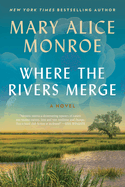
| Publisher: | Morrow | |
| Genre: | Women, World Literature, Sagas, American - 20th Century, General, Coming of Age, Literary, Southern, Fiction, Historical | |
| ISBN: | 9780063249424 | |
| Pub Date: | May 2025 | |
| Price: | $30 |
| Fiction |
by Mary Alice Monroe
Prolific Southern novelist Mary Alice Monroe turns to historical fiction in her immersive dual-timeline novel, Where the Rivers Merge. As 88-year-old Eliza Pinckney Rivers faces her own mortality, she confronts tough moments from the past and considers how best to preserve her family's land for the future.
Monroe's narrative shifts between Eliza's early 20th-century childhood at Mayfield, her family's sprawling estate outside Charleston, S.C., and 1988, when the elderly Eliza shares her complicated history with her granddaughter and other relatives. With lush descriptions of the Carolina Lowcountry and Eliza's adventures with her brothers and friends, Monroe paints an idyllic picture of a privileged childhood. But World War I, the realities of Jim Crow laws, and other challenges soon enter the picture, and Eliza makes difficult choices--plus a few mistakes--as she navigates young womanhood and her parents' conflicting expectations.
In 1988, Eliza is nearing retirement, determined to save Mayfield from the ambitions of her greedy son and safeguard her family's legacy. As she recounts her early experiences, she owns up to her past failings and discovers surprising new sides to her family's story. Monroe weaves Eliza's fictional history into the larger narrative of the Deep South, and explores the effects of familial expectations, the weight of racism and sexism, and the enduring power of friendship and love.
Sweeping and sensuous, Where the Rivers Merge is a layered family saga and an insightful exploration of one woman's efforts to honor the past while remaining open to change. --Katie Noah Gibson, blogger at Cakes, Tea and Dreams
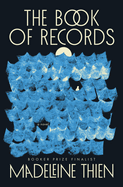
| Publisher: | W.W. Norton | |
| Genre: | Immigration, General, Literary, Time Travel, Fiction, Historical | |
| ISBN: | 9781324078654 | |
| Pub Date: | May 2025 | |
| Price: | $28.99 |
| Fiction |
by Madeleine Thien
Fans of Madeleine Thien's Do Not Say We Have Nothing, shortlisted for the 2016 Booker Prize, will find familiar themes in The Book of Records. Thien blurs the lines between history and story to build a Möbius strip of a novel that defies pat summaries. In its opening lines, The Book of Records introduces Lina and points to a specific time and place: "Half a century ago, during the rainy season, when I was seven years old, my father and I reached the Sea." It soon becomes clear, however, that this place--and the time Lina and her father spend there--cannot be easily defined. When Lina's father insists that "the buildings of the Sea are made of time," Lina tries to understand: "I was seven years old. I knew that he was pulling my leg and also that he was being truthful."
When Lina meets the neighbors--Jupiter, Bento, and Blucher--they insist that three biographies that she has salvaged do not reflect the lives of their subjects: Chinese poet Du Fu; Dutch philosopher Baruch Spinoza; and German writer Hannah Arendt. Readers will understand that each neighbor represents one of these people, simultaneously themselves in the present and the figure from the past. Thus the novel moves effortlessly across time, raising questions about the nature of a good life and how to respond to catastrophic times. Despite the often heavy nature of their stories, each narrative strand contributes to a sense of lightness, a buoyancy in the face of rising waters that will feel necessary and timely to readers in today's uncertain climate. --Sara Beth West, freelance reviewer and librarian

| Publisher: | Poisoned Pen Press | |
| Genre: | Mystery & Detective, Amateur Sleuth, Crime, International Crime & Mystery, Fiction | |
| ISBN: | 9781728292410 | |
| Pub Date: | May 2025 | |
| Price: | $17.99 |
| Starred | Mystery & Thriller |
by Eliza Reid
As Iceland's first lady from 2016 to 2024, Canada-born Eliza Reid (Secrets of the Sprakkar: Iceland's Extraordinary Women and How They Are Changing the World) was a bridge between two nations. In her first novel in a planned series, Death on the Island, an old-school mystery so gratifyingly bendy it delivers multiple twists, Canadian-Icelandic relations could really use her unifying spirit.
One not-so-dark and stormy night, a small Canadian delegation of diplomats are attending a private dinner at an upscale restaurant on the tiny Westman Islands (population: 4,500), off the south coast of Iceland. The occasion is the official opening of a Canadian artist's exhibition inspired by Iceland's nature; the show is being coordinated by the Canadian embassy. At the gathering, the deputy ambassador winds up dead; as the Canadian ambassador puts it to the investigating officer, "We toasted, and drank, and then she seemed to choke or something." And yes, some of the people present had reason to want the deputy ambassador dead.
Reid chases the murder with chapters that count down the hours to the event, during which the novel's perspective wanders among four characters who ultimately attend the dinner, one of whom--the ambassador's wife--decides to play detective. Aside from Reid's suspense-maximizing structural inventiveness, Death on the Island is a Christie-esque affair, with a tight roster of secret-keeping suspects and a satisfyingly stagey all-hands-on-deck summing-up; Reid has just swapped out Christie's secluded English country manor for an Icelandic island that's not all that much bigger. --Nell Beram, author and freelance writer
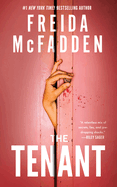
| Publisher: | Poisoned Pen Press | |
| Genre: | Psychological, Suspense, Thrillers, Fiction | |
| ISBN: | 9781464227318 | |
| Pub Date: | May 2025 | |
| Price: | $17.99 |
| Mystery & Thriller |
by Freida McFadden
Author Freida McFadden (The Housemaid; The Boyfriend) is no stranger to shocking thrills and suspenseful twists. Blake Porter, however, is. When he is suddenly fired from his position as v-p of marketing, he struggles to pay the mortgage for his and his fiancée's new brownstone. Out of options, Blake and Krista look for a tenant to rent their extra room and alleviate some of their money troubles. Blake almost gives up after a handful of horrible prospects and is content to offer the room to Whitney, a seemingly normal and admittedly beautiful woman.
Blake thinks everything is going great--until it isn't. He can't figure out what is causing fruit flies to infest the kitchen, he breaks out in an awful rash, and he is kept awake at night by loud, unexplained noises. Blake becomes convinced that Whitney is to blame; stress from his upended work life and the increasingly disturbing occurrences at home heightens tensions between Blake and Whitney and puts his relationship with Krista at risk.
Among the growing list of things Blake can't explain is: Why? By the time he begins to put the pieces together, he fears that he may be too late. Playing with themes of secrets and lies, McFadden creates a thrilling story of revenge and employs a male narrator--a rarity in her oeuvre. Blake's perspective is enthralling and makes readers wonder what really turned his perfect relationship, job, and house into his worst nightmare. Full of surprises at every turn, The Tenant questions whether anyone can truly be trusted. --Clara Newton, freelance reviewer
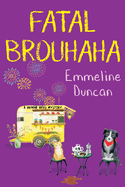
| Publisher: | Kensington Cozies | |
| Genre: | Mystery & Detective, Fiction, Women Sleuths | |
| ISBN: | 9781496744906 | |
| Pub Date: | April 2025 | |
| Price: | $17.95 |
| Mystery & Thriller |
by Emmeline Duncan
Fatal Brouhaha is the fifth book in Emmeline Duncan's delightful coffee-themed Ground Rules Mysteries series set in Portland, Ore. In this installment, Sage Caplin and Harley Yamazaki, co-owners of the Ground Rules coffee empire, have just expanded their business through a canned Irish coffee collaboration with Doyle's Oregon Whiskey.
They're celebrating the launch during a makers' fair at the Doyle's distillery over the Fourth of July weekend, but the festivities are tragically interrupted by a murder. "This was a nightmare. But I was awake," Sage thinks with a shudder when she discovers the body of longtime business rival Mark Jeffries, owner of Left Coast Grinds, incriminatingly close to her own vehicle. Even worse, Harley was seen loudly arguing with Mark, who had insinuated his way into the festival. This, coupled with their long public history of bad blood, makes Harley a prime suspect.
Sage, now a seasoned investigator, sets out to prove her partner's innocence and solve the murder. She is aided by a lively and memorable group, including the Ground Rules staff and her fiancé's son, Niko. Duncan (Fresh Brewed Murder) expertly balances the intricacies of a murder mystery with strong character development. Fans of the series will appreciate the return of characters who feel like old friends. Many layered subplots, including an upcoming wedding and the appearance of a mysterious figure, drive the story forward.
With plenty of Pacific Northwest flavor, many relatable and likable characters, and several enticing coffee facts and recipes, Duncan creates a well-paced, twisty mystery that will keep readers guessing. --Grace Rajendran, freelance reviewer
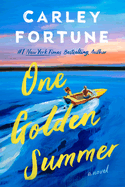
| Publisher: | Berkley | |
| Genre: | Women, Romance, General, Coming of Age, Fiction | |
| ISBN: | 9780593638910 | |
| Pub Date: | May 2025 | |
| Price: | $19 |
| Romance |
by Carley Fortune
Carley Fortune (This Summer Will Be Different) is an expert at capturing the essence of a sparkling summer romance at the lake. As a teen, Alice Everly spent a transformative summer at Barry's Bay, a small lake town, so she decides it is the perfect place for her grandmother to recover from a shattered hip and dampened spirits: "A change of scene. Fresh air. Endless skies. Glittering water. A second trip to the lake."
Alice, now 32, is recently single and struggling with her identity as a photographer, and Barry's Bay reminds her of her first time behind the camera and the photo that changed her life. The subject, three teens in a yellow boat, embodied adolescent feelings of fun and freedom. Alice decides that is exactly what she needs: to feel like she's 17 again. After she accidently lets her cocky and very cute neighbor, Charlie, see her embarrassing bucket list, the pair check off items together and Alice finds that her grandmother's motto, "Good things happen at the lake," might be true. As she falls back in love with Barry's Bay and photography, she also begins to fall for Charlie, who turns out to be one of the boys in the yellow boat.
Fortune smartly intertwines a fun-filled love story with themes of self-discovery and second chances. Charlie first appeared in Fortune's debut novel, Every Summer After, set years before One Golden Summer. Now, his past inspires him to join Alice in jumping off the big rock, going skinny-dipping, and much more. The summer sun shines brightly on their witty banter, sweet moments, and undeniable chemistry, but causes them to wonder if any of it will last after the sun sets on their final day of summer. --Clara Newton, freelance reviewer

| Publisher: | Drawn & Quarterly | |
| Genre: | Biography & Memoir, Humorous, Nonfiction, Comics & Graphic Novels | |
| ISBN: | 9781770467743 | |
| Pub Date: | May 2025 | |
| Price: | $21.95 |
| Graphic Books |
by Keiler Roberts
Keiler Roberts creates "more of the same" in the deliciously sardonic Preparing to Bite, an autobiographical, mostly unfiltered, examination of quotidian life as mother to Finn, wife to Scott, daughter to aging parents, and friend to a select few. She compiles what she calls "vignettes of meaningless experiences" into a delightfully droll collection of single-page, black-and-white, line-drawn comics whose simplicity belies Roberts's multilayered observations.
The Covid-19 pandemic still looms, with masks noticeable outside the home. Classes continue online; Roberts queries her students: "Have any of you experienced fomo about a Zoom that you weren't in?" Her easy relationship with daughter Finn is particularly heartwarming--playing video games, taking walks (often holding hands), continuing conversations while on the toilet. Their relationship is also bluntly honest: "It looks like your talent has really decreased," Finn comments about one of Roberts's comics. Meanwhile, Scott is (barely) tolerated--"you bother me wherever you are"--even as Roberts recognizes his kindness in not pointing out her faults. Graphic novelist friend Karl Stevens cameos not only in Roberts's phone conversations but also as a guest on the page, with meticulously detailed panels that are cleverly integrated into Roberts's narrative. Time passes, poignantly marked by the death of the family's older dog and the adoption of another.
Just as Roberts did not quit making comics in The Joy of Quitting, she decides here, too, that she won't quit, "not yet," while Scott queries, "How many times have you quit now?" Will she/won't she might be a repeated discussion, but lucky readers have proof here that she gratefully, glowingly persevered. --Terry Hong
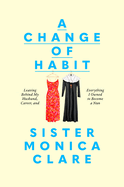
| Publisher: | Crown | |
| Genre: | Biography & Autobiography, Self-Help, Personal Growth, Episcopalian, Religion, General, Christianity, Memoirs | |
| ISBN: | 9780593727119 | |
| Pub Date: | April 2025 | |
| Price: | $30 |
| Starred | Biography & Memoir |
by Sister Monica Clare
Five-year-old Claudette Powell, watching The Nun's Story on TV, announced to her horrified mother, "That is what I want to do." In A Change of Habit, her inspiring, detailed memoir, Sister Monica Clare (Powell's saint's name) describes her circuitous, determined path to the convent, from her Southern Baptist roots through years of detours that never derailed her dream.
"I spent the first forty-six years of my life convinced I was on the wrong path. Everywhere I went I felt like a fish climbing a tree. But the truth is God was paving my way," writes Clare as she recalls a girlhood spent doodling Jesus instead of horses. At eight, Clare requested an immersion baptism in her grandmother's church, then embraced Mormonism. At 17, she met nuns, "the first women I'd met who defied the rules of southern femininity."
As she struggled to satisfy "an imaginary checklist" of expectations, her New York University graduation led to jobs in improv, a move to Hollywood, a brief unhappy marriage. In 2000, she was confirmed in the Episcopal Church, and she made her decision to "come out of the closet as a nun." She was still fearful of change, and not until a "search weekend" at the Community of St. John the Baptist did she commit to the process, which led to her becoming a postulant, "basically a nun-in-training." However, Clare never wavered through years of adjustment to convent life and service. "I don't want to live my life without being a sister," she knew. Her open and often humorous memoir concludes as she joyfully anticipates achieving the next steps in living her faith. --Cheryl McKeon, Book House of Stuyvesant Plaza, Albany, N.Y.
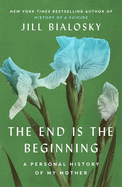
| Publisher: | Washington Square Press | |
| Genre: | Biography & Autobiography, Family & Relationships, Self-Help, Parenting, Death, Grief, Bereavement, Motherhood, Memoirs | |
| ISBN: | 9781451677928 | |
| Pub Date: | May 2025 | |
| Price: | $28.99 |
| Biography & Memoir |
by Jill Bialosky
Jill Bialosky's 12th book, The End Is the Beginning, is a bereavement memoir with a difference: it opens with the death of Bialosky's mother, Iris, but proceeds backward to lovingly spool through the course of an "extraordinary life" marked by tragedies.
In March 2020, 86-year-old Iris died in a Cleveland, Ohio, assisted living facility. The Covid-19 lockdown meant Bialosky (Poetry Will Save Your Life) could only attend the funeral virtually, so she decided to make her own memorial, seeking "to understand and capture the woman behind the mother who was often so unknowable to me." Hereafter, the narrative jumps back in intervals to highlight key changes in Iris's life. Bialosky spends perhaps a bit too much time on Iris's decline with Alzheimer's disease. For Bialosky and her two sisters, actual grief reverts to anticipatory grief as Iris enters assisted living after selling the family home of 50 years.
Effect precedes cause, so Iris's medication-resistant depression heralds her youngest daughter's death by suicide--the subject of Bialosky's History of a Suicide. Iris's first husband, Milton, dies of heart failure, leaving her a single mother of three at age 25. Re-creating Iris's teenage years requires imagination to supplement the details from her scrapbook. At the end (which is indeed the beginning), Iris is born into a Hungarian Jewish community in Ohio and loses her mother by age 10.
This exercise enhances Bialosky's appreciation for her mother's physical and emotional struggles. The reverse chronology is a stroke of genius as tender attention brings a loved one back to life. --Rebecca Foster, freelance reviewer, proofreader and blogger at Bookish Beck
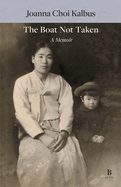
| Publisher: | Betty/WTAW Press | |
| Genre: | Biography & Autobiography, Asian & Asian American, Memoirs | |
| ISBN: | 9798987719794 | |
| Pub Date: | May 2025 | |
| Price: | $18.95 |
| Biography & Memoir |
by Joanna Choi Kalbus
Retired educator Joanna Choi Kalbus's hauntingly poignant debut memoir, The Boat Not Taken: A North Korean Mother and Her Daughter, started in 1996 as a personal project. Kalbus, born in 1941, pays homage to her late Omai (mother) over a near century of complex history spanning continents and cultures.
The fourth of eight children--nicknamed "Neh-chai," literally meaning fourth--in "a prominent clan," Omai was just five when Japan formally annexed the Korean peninsula in 1910. Amid the brutal occupation, Omai married, bore three children, became widowed at 33, and eventually escaped south. She briefly placed her youngest, Kalbus, in a Seoul orphanage, then reclaimed her, with plans to return to her natal village. When mother and daughter attempted to board a northbound boat in 1946, the ticket agent slapped Omai with the warning, "Are you out of your mind.... Most people in North Korea are desperately trying to flee from there!" The pair remained in the South and survived through Omai's courageous ingenuity before miraculously immigrating in 1951 to California to begin again.
Throughout their intertwined lives, Omai was the head, Kalbus the tail. Omai's 1996 death made Kalbus "realize how little I knew about her life and therefore of my own." Traversing three countries, Kalbus's "quest to discover the truth of my mother's life" led her to "discover[ing] my own." Kalbus writes with unadorned honesty, presenting lice, infections, political torture, and shattering betrayal with straightforward, calm prose. Her emotional control on the page bears witness to enduring strength, acknowledging and celebrating Omai's inspiring support and unfaltering determination. --Terry Hong
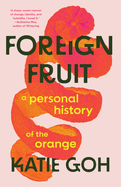
| Publisher: | Tin House | |
| Genre: | Biography & Autobiography, Nature, Technology & Engineering, Agriculture & Food (see also Political Science, Cultural Botany, Asian & Asian American, General, Agriculture, Social Science, Public Policy - Agricultur | |
| ISBN: | 9781963108231 | |
| Pub Date: | May 2025 | |
| Price: | $27.99 |
| Social Science |
by Katie Goh
"The morning after a white man murdered six Asian women, I ate five oranges." So opens Katie Goh's Foreign Fruit, a poetic and emotional rumination on identity, colonialism, and, of course, oranges. More than a simple history of the orange, Foreign Fruit takes readers to Northern Ireland, Malaysia, China, and California in pursuit of the fruit and family.
The lush text will make readers long for a juicy citrus fruit--one should be at hand at all times during reading. Readers journey on the Silk Road, in galleries of Dutch still-life paintings featuring impossible arrangements of citrus and porcelain, to Goh's aunt's favorite (and secret) pomelo farmer in Malaysia, and to the last surviving parent tree of the classic navel orange. Along the way, Goh always comes back to her opening line and to her identity as a woman of Irish and East Asian ancestry. She ponders the uptick in violence against Asians during the Covid-19 pandemic and reflects on the plans for a memorial honoring the victims of Los Angeles's 1871 Chinatown massacre. She eats countless oranges, both alone and surrounded by grandparents, aunts, and uncles in Malaysia.
Readers may never look at sky-high piles of gleaming fruit at markets the same way again after learning the history of how European colonizers spread citrus trees to nearly every island they passed on their voyages to stave off scurvy. Part history, part memoir, Foreign Fruit is an excellent choice for readers interested in the continuing impacts of European colonization across the globe or anyone who has a passion for citrus. --Alyssa Parssinen, freelance reviewer and former bookseller
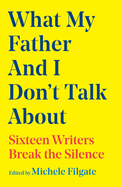
| Publisher: | Simon & Schuster | |
| Genre: | Family & Relationships, Parenting, Women Authors, Literary Collections, Fatherhood, Essays | |
| ISBN: | 9781668049655 | |
| Pub Date: | May 2025 | |
| Price: | $29.99 |
| Essays & Criticism |
by Michele Filgate, editor
What My Father and I Don't Talk About, the follow-up to Michele Filgate's What My Mother and I Don't Talk About, is an anthology of 16 compassionate, nuanced essays probing the intricacies of family relationships.
Understanding a father's background can be the key to interpreting his later behavior. Isle McElroy had to fight for scraps of attention from their electrician father, who grew up in foster-care situations where he often suffered abuse; Susan Muaddi Darraj's Palestinian father was sent to the U.S. to make money to send home. Such experiences might explain why the men were unreliable or demanding as adults. Patterns threaten to repeat across the generations: Andrew Altschul realizes his father's hands-off parenting (he joked he'd changed a diaper "once") was an outmoded convention he rejects in raising his own son; Jaquira Díaz recounts a time when she and her father "battled debilitating depression in tandem"; she learned that his stemmed from his tragic loss of his first family.
Some take the title brief literally: Heather Sellers dares to ask her father about his cross-dressing when she visits him in a nursing home; Nayomi Munaweera is pleased her 82-year-old father could escape his arranged marriage, but the domestic violence that went on remains unspoken. Tomás Q. Morín's "Operation" has the most original structure, with the board game's body parts serving as headings. All the essays display psychological insight, but Alex Marzano-Lesnevich's--contrasting their father's once-controlling nature with his elderly vulnerability--is the pinnacle.
Despite the heavy topics--estrangement, illness, emotional detachment--these candid pieces thrill with their variety and their resonant themes. --Rebecca Foster, freelance reviewer, proofreader and blogger at Bookish Beck
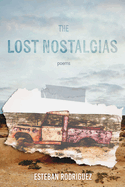
| Publisher: | CavanKerry Press | |
| Genre: | Hispanic & Latino, American, Family, Poetry, Subjects & Themes | |
| ISBN: | 9781960327116 | |
| Pub Date: | May 2025 | |
| Price: | $18 |
| Starred | Poetry |
by Esteban Rodriguez
The moving vignettes in Esteban Rodríguez's ninth poetry collection, The Lost Nostalgias, contrast the hardships and accomplishments in his Mexican American family's history.
Looking back on his Texas upbringing, Rodríguez (Lotería) feels a mixture of pride and shame. "Tongue" notes how, as a teenager, he was critical of his parents' occasional difficulties with the English language ("esplain," "breatheded"). He wishes he had been more tolerant, of his mother in particular: "I should have cared less about,/ because didn't her attempts count,/ didn't her Congrachoolashuns mean// what it meant all along?"
But he also admires his parents' hard work and tenacity. "Herbalife" recounts his mother's sales endeavors; "Payback" and "Cure" recall how she was "always ready/ for an emergency," quick to set her son's dislocated shoulder or treat his congestion with a combination of prayer and VapoRub. Meanwhile, in "Home," his father's indefatigable manual labor eventually funded their house in the suburbs: "a decade of construction sites,// sixty-hour work weeks, and of bearing/ the bright beatings from the sun had finally/ paid off."
Body parts are repeated symbols of life's wear and tear: Rodríguez's mother's teeth remind him of "some old country curse--// a generational spell of cavities and plaque"; and feet are troublesome for multiple relatives. Rodríguez creates enrapturing rhythms through alliteration and recurrent vocabulary--sometimes an incidental word from one poem serves as the title of the next--and even finds beauty in a scrapyard ("Landlocked") or a rest stop ("Bluebonnets"). Lyricism gilds the everyday--memory, health, and landscape--with grace. --Rebecca Foster, freelance reviewer, proofreader and blogger at Bookish Beck

| Publisher: | Riverhead | |
| Genre: | Family Life, Humorous, General, Literary, Fiction | |
| ISBN: | 9780593190272 | |
| Pub Date: | May 2025 | |
| Price: | $19 |
| Now in Paperback |
by Miranda July
Whether it's directing films or performing in them, fashioning visual art, or writing, Miranda July (The First Bad Man) has demonstrated she's a multitalented creative. That talent manifests itself again in her second novel, All Fours, an unconventional but engaging story about one woman's attempt to navigate the sometimes perilous passage through the middle years.
Less than 30 minutes away from the home in Los Angeles where she lives with her husband and their seven-year-old ungendered child, July's highly self-aware 45-year-old unnamed narrator abandons her "vision quest-style journey" to New York City. Instead, she holes up in a "shabby, pale-yellow stucco motel" in the town of Monrovia, Calif., and gets her room professionally redecorated. It's in that lavishly appointed space over the course of the next two weeks that she engages in one of recent literature's more unusual affairs with Davey, a man nearly 15 years her junior, who works at a Hertz dealership and dreams of becoming a professional hip-hop dancer. For July's narrator, the emotionally charged moments that transpire in room 321 of the Excelsior trigger a profound re-examination of her life.
July's narrator is, by turns, intriguing and exasperating, but her forays into her past and a future she struggles to envision are never dull or predictable. With an often wry but consistently provocative approach, July relies on her complicated protagonist's insight to interrogate a variety of weighty themes, including female sexuality, creativity, and the sense many have as they cross the threshold of the mid-40s that a clock is ticking more insistently. For all those reasons, All Fours is a frequently surprising and refreshingly original story. --Harvey Freedenberg, freelance reviewer
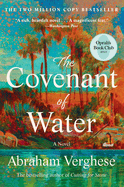
| Publisher: | Grove Press | |
| Genre: | India - General, World Literature, Family Life, General, Literary, Medical, Fiction | |
| ISBN: | 9780802162731 | |
| Pub Date: | May 2025 | |
| Price: | $22 |
| Now in Paperback |
by Abraham Verghese
Abraham Verghese's sprawling second novel, The Covenant of Water, an Oprah Book Club Pick, traces the epic story of a family in southern India afflicted by a mysterious condition: at least one person in every generation dies by drowning.
Verghese (Cutting for Stone) sets his story in the small community of Saint Thomas Christians in Kerala, centered on the estate of Parambil. When a 12-year-old child bride--unnamed, but literate, unusual for her time--is married off to a 40-year-old widower in 1900, she becomes the surrogate mother to his two-year-old son, JoJo. Disoriented and lonely at first, she will eventually transform into Big Ammachi, the matriarch of Parambil and a wise, steady, thoughtful figure in the lives of the other characters. After a tragedy strikes, Big Ammachi discovers a handwritten document outlining the Condition, the water-related affliction that has affected generations of her husband's family. She can neither prevent nor cure this disease, but seeks to understand it, especially as it comes to affect her son, Philipose, and other family members.
In Part Two, Verghese shifts gears to focus on Digby, a young Scotsman who signs up for the Indian Medical Service after the death of his mother. Digby's destiny will eventually intersect with that of the family at Parambil, via a sanctuary for leprosy patients run by a compassionate Swede named Dr. Rune Orqvist.
Vast in scope and also surprisingly intimate, Verghese's novel covers most of the 20th century in India, but is ultimately the story of a family--blood and chosen--caring for each other through all of life's challenges and changes. --Katie Noah Gibson, blogger at Cakes, Tea and Dreams
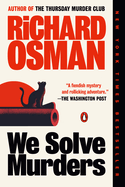
| Publisher: | Penguin Books | |
| Genre: | Mystery & Detective, Amateur Sleuth, Fiction | |
| ISBN: | 9780593653241 | |
| Pub Date: | May 2025 | |
| Price: | $19 |
| Now in Paperback |
by Richard Osman
Fans of the Thursday Murder Club mystery series (The Bullet That Missed; The Last Devil to Die) may never tire of it, but one can't begrudge author Richard Osman for trying something new. Perhaps he was finding things getting a little too cozy in Coopers Chase, spurring him to create the high-anxiety but hilarious We Solve Murders.
Retired cop turned private investigator Steve Wheeler essentially lives in a cozy mystery. He's a quietly heartbroken widower residing in the English village of Axley, where pub quizzes are all the adventure he craves. About as cozy as a stomachache is the career of his daughter-in-law, Amy, a bodyguard with Maximum Impact Solutions. She's currently protecting Rosie D'Antonio--"the world's best-selling novelist, 'if you don't count Lee Child' "--on the writer's private South Carolina island. Only when Amy, fearing for her own life, phones Steve for help is he willing to leave Axley--provided he can find a cat sitter.
If Steve belongs in a cozy mystery and Amy in an action thriller, what's the upshot when they join forces? Farce of the highest order. We Solve Murders sends up influencers, egomaniacal actors, ChatGPT, and more, but the novel's centerpiece is the relationship between Amy and Steve. (Thinks Steve at one point: "It's not every daughter-in-law who will high-five you when you've shot a drug dealer in a Coldplay T-shirt, is it?") Great news: these characters will get another vehicle, according to Osman's acknowledgments, which are almost as entertaining as the book itself. --Nell Beram, author and freelance writer
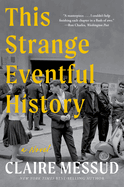
| Publisher: | W.W. Norton | |
| Genre: | Sagas, Family Life, General, Literary, 20th Century - General, Fiction, Historical | |
| ISBN: | 9781324110408 | |
| Pub Date: | May 2025 | |
| Price: | $18.99 |
| Now in Paperback |
by Claire Messud
The multigenerational saga is as old as The Mahabharata, but contemporary authors still put their own spins on the genre. An erudite example is This Strange Eventful History, Claire Messud's epic recounting of seven decades of a pied-noir family--those of European descent born in Algeria before the country's 1962 independence from France. The story of the Cassars, based on Messud's family, begins in 1940, when military attaché Gaston is sent to Greece to find out what "the fascist Italians" are "up to in Albania." Yet he feels "trapped in this remote and irrelevant backwater," in part because he misses his family, including wife Lucienne, with whom he struggles to maintain an aura of an ideal marriage, and their two children: François, the older child, and Denise, who fears the Nazis plan to kill their father.
Messud (The Woman Upstairs; The Burning Girl) follows her characters through multiple locales, from Algeria to Toronto, Buenos Aires to Sydney. Her novel changes perspectives throughout, with chapters devoted to Denise's piousness, which stems from the family's Catholic upbringing; François's rejection of their father's wish that he study science and his pursuit of a business degree in Paris instead, because he wants "to conquer the world"; François's marriage to Barbara, a Canadian woman he meets at Oxford; and Chloe, one of their two daughters, whose determination to become a writer is complicated by concern over her aging relatives. Messud's chronicle of one family's history, the political events that shape them, and "these strange, beautiful, appalling times" in which they live is as fine a family saga as one will read. --Michael Magras, freelance book reviewer
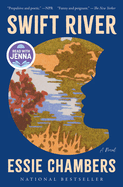
| Publisher: | Simon & Schuster | |
| Genre: | Women, Literary, Coming of Age, African American & Black, Fiction | |
| ISBN: | 9781668027929 | |
| Pub Date: | May 2025 | |
| Price: | $17.99 |
| Now in Paperback |
by Essie Chambers
Essie Chambers's first novel, building upon her work in film and television (the documentary Descendant), is set in the decaying New England mill town of Swift River, with meditations on place and the effect of a hometown upon generations of lives. Sixteen-year-old Diamond narrates: "This isn't a mystery or a legend. It's a story about leaving. It starts with my body. My body is a map of the world." Her voice is strong, clear, and confident, interspersed with flashbacks to Diamond's life at age nine, when her father disappeared. These two timelines are eventually joined by letters from a previously unknown aunt and great-aunt, so that the voices of three women over decades triangulate a story of longing, family connections, and growing into oneself.
In the summer of 1987, Diamond mourns her lost father, the lone man of color in town, as she and her mother, of "pure Irish stock," struggle with ostracization and social class. Out of the blue, a letter from an Aunt Lena in Woodville, Ga., disrupts Diamond's sense of herself and her heritage, and establishes her first link to any family since her beloved Pop disappeared. From Diamond and Lena's exchange of letters surface the preserved letters of Lena's Aunt Clara, so that three versions of Swift River slowly emerge through the years.
Swift River is an ambitious novel. Chambers's choice of the epistolary format is inspired, as Lena's and Clara's voices emphasize the importance of relationships and connection. Featuring strong characters and a strong sense of place, amid numerous social issues and personal challenges, Chambers's novel will appeal to a wide audience and stick with its readers long past its stirring final pages. --Julia Kastner
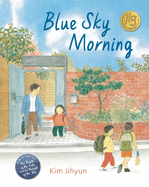
| Publisher: | Floris Books | |
| Genre: | Emotions & Feelings, Asia, Family, Social Themes, Juvenile Fiction, Multigenerational, Places | |
| ISBN: | 9781782509080 | |
| Pub Date: | May 2025 | |
| Price: | $18.99 |
| Starred | Children's & Young Adult |
by Jihyun Kim, trans. by Polly Lawson
Korean author/artist Jihyun Kim exquisitely transforms a child's ordinary morning into an appreciative meditation in Blue Sky Morning, her second picture book, following her wordless 2022 debut, The Depth of the Lake and the Height of the Sky. Here Kim adds narrative text, gently translated by accomplished polyglot Polly Lawson.
Unlike most mornings, "you're not in a hurry today." A voice rings out over the neighborhood, the leaves just beginning to reveal fall colors: "Wake up, Eunny! It's a beautiful, blue sky morning." In her bright room, Eunny is rousing slowly. Outside, "lots of people are starting their busy days"; Grandpa "is already back from his morning walk" and Mama quickly drinks her coffee. Once Eunny is outside, though, the reminder to "take a deep breath" comes with the "cool and fresh" air. Hand-in-hand, Mama and Eunny join the stream of hurrying children, but the blue sky slows time and they "stop for a moment, and look up." All around the duo, businesses are opening their doors, workers are delivering and sweeping, and people are talking on phones, but mother and daughter are having a moment, in this "beautiful, blue sky morning."
Kim works in watercolor and pencil, using sublimely muted colors. Her focus on line, texture, perspective, and realism makes each piece of art a whimsical adaptation of what could be quotidian photographs. She misses none of the details: last night's socks on the floor, finished coffee drinks carelessly left behind, weeds pushing through sidewalk cracks. The magnificent result is a daily reminder to welcome, enjoy, cherish, and share the simple beauty of the everyday. --Terry Hong
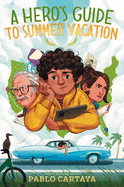
| Publisher: | Kokila | |
| Genre: | Travel, Hispanic & Latino, Family, Juvenile Fiction, Multigenerational | |
| ISBN: | 9780451479754 | |
| Pub Date: | May 2025 | |
| Price: | $18.99 |
| Starred | Children's & Young Adult |
by Pablo Cartaya
Darkness, grief, and generational trauma are carefully probed in Pablo Cartaya's audacious and fascinating Rubik's Cube of a novel, A Hero's Guide to Summer Vacation. Cartaya's format contains layers of stories within stories and clever parallels that combine to create a daring and sophisticated middle-grade read.
Thirteen-year-old Gonzalo Alberto Sánchez García "never considered himself to be the hero of his own story." After his father died at the beginning of seventh grade, the year passed "in a kind of daze." For the summer, Gonzalo's mother has sent him to stay with his taciturn grandfather, Alberto, an antisocial hermit who also happens to be beloved by millions for his series of children's fantasy books. Gonzalo, though, has never had any interest in reading books written by a grandfather who seems averse to human connection. When Gonzalo's mom, who's also Alberto's manager, sends the duo on a cross-country road trip to promote the final book in Alberto's series, Gonzalo begrudgingly begins to read the books. At the same time, while they make pit stops both planned and random, Alberto tells Gonzalo about his early life in Cuba as a dissident and prisoner. As the stories coil together, they reveal to Gonzalo that where his family has been may be equally as important as where they're going.
While the premise of a road trip may seem quaint, Cartaya (Each Tiny Spark) builds a complex, labyrinthian work reminiscent of Argentine legend Jorge Luis Borges. A Hero's Guide to Summer Vacation, influenced by Cartaya's own loss, feels both intimate and expansive. It is a wondrous looking glass of catharsis and reconciliation. --Luis G. Rendon, freelance reviewer
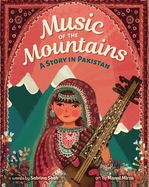
| Publisher: | Barefoot Books | |
| Genre: | Middle East, Music, Holidays & Celebrations, Religious, Family, Ramadan, Juvenile Fiction, Performing Arts, Muslim, Multigenerational, Places | |
| ISBN: | 9798888593660 | |
| Pub Date: | May 2025 | |
| Price: | $17.99 |
| Children's & Young Adult |
by Sabrina Shah, illust. by Manal Mirza
In British Pakistani author Sabrina Shah's heartwarming and joyful U.S. debut, Music of the Mountains, a girl must overcome her feelings of inadequacy to find the courage to play the rabab at her school concert. Zahra's Blessings illustrator Manal Mirza, who is Pakistani American, illustrates this warmhearted intergenerational picture book.
Roohi is excited to play the rabab, "a traditional lute-like instrument," for the Eid celebrations at her school. But she fears she will never be as good a player as Neeka Baba, her grandfather. He tells her she must believe in herself and "play the music of the mountains.... You must feel the rhythm, feel the beat of your people." So, every day leading up to the celebration, she practices with Neeka Baba. But then, he gets sick. Neeka Baba encourages Roohi that it's her turn: "play with the courage of all those who came before you, Guljaan [darling]." Roohi, though, fears she will be a disappointment. "Maybe," her mother says, "play like yourself," and the music cascades from Roohi's rabab as her "heart springs to life with the memory of... sweet mountain melodies."
Shah's prose, using a drum-like beat, features the importance of generational relationships and preserving tradition while simultaneously emphasizing Roohi's individual contribution. Mirza's illustrations have a painterly style; she includes copious texture and detail and elegantly captures characters' emotional states. Information about the rabab and music recommendations, as well as details about where Roohi's family is from, Eid, Roohi's clothing, and a Pashto glossary make up the backmatter. Shah and Mirza's picture book is a triumphant depiction of culture, tradition, and familial bonds. --Hadeal Salamah, blogger, librarian, freelance reviewer

| Publisher: | Graphix | |
| Genre: | Emotions & Feelings, General, Family, Marriage & Divorce, Social Themes, Juvenile Fiction, Comics & Graphic Novels | |
| ISBN: | 9781338853919 | |
| Pub Date: | May 2025 | |
| Price: | $14.99 |
| Children's & Young Adult |
by Kane Lynch
Debut author/illustrator Kane Lynch draws on personal childhood experiences in Reel Life, a grounded and accessible middle-grade graphic novel about a film-loving boy who creates a documentary about his parents' surprise divorce.
Galen simply wants to make movies with his friends, but divorce has different plans for the sixth grader. Kyle, one of Galen's friends, is turning into a bully while his parents fight a long custody battle. Now Galen's parents are divorcing, seemingly out of the blue, and he feels like he's in "a terrifying alternate world where everyone is transformed." Since the only reliable things in his life are his love of film ("no matter how scary or strange a movie is, in the end, everything always makes sense") and his best friend, Luna, Galen decides to make a documentary with Luna about "the mystery" of his parents' split. But the more he records--meeting his dad's cool new girlfriend, beginning a new two-house schedule, struggling to stay connected with friends--the less he understands. Can Galen find the right lens to bring his family and friends' instability into focus?
Lynch expertly juggles subplots in the many nuanced aspects of Galen's uprooted life to create a fictional narrative of divorce that nonetheless feels raw, particularly in the realistic dialogue. Thickly outlined characters stand out against the detailed, less color-saturated backgrounds by colorist Maddie Sackett. Fans of Lucy Knisley's Stepping Stones and Jarad Greene's A-Okay will likely find Reel Life an excellent addition to their shelves. --Nicole Brinkley, bookseller and writer

| Publisher: | Kane Miller | |
| Genre: | Animals, United States, General, Science & Nature, General (See Also Headings Under Animals or Technology), Juvenile Nonfiction, Places | |
| ISBN: | 9781684645657 | |
| Pub Date: | May 2025 | |
| Price: | $19.99 |
| Children's & Young Adult |
by Joe Yogerst, illust. by Hannah Bailey, Nic Jones
Travel journalist Joe Yogerst shows young readers that the United States is a land ripe for exploration through a diverting and informative combination of facts, maps, definitions, and pictures in Explore! America's Journeys. In this installment of the Explore! America series, Yogerst charts road trips for kids and their families.
Historical information is concisely combined with recommended geographical pit stops throughout the West, Southwest, Northeast, Midwest, and South. Suggested recreational activities are subtly imbued with educational context; Yogerst notes that Big Sur's state parks and the Santa Cruz Mountains have groves of old-growth coastal redwoods, "the planet's tallest trees. One of the region's largest and oldest is the Colonial Tree in Pfeiffer Big Sur State Park, which is 31 feet around its base and an estimated 1,100 years old." Modes of transportation for exploration are a focus of the title, in which arriving at the intended destination is merely the first step. Upon arrival, visitors have an array of mini excursions curated by Yogerst that they can embark on by bike, boat, car, foot, train, horse, and more. Additional practical tips (likely most helpful for caretakers) such as budget-friendly accommodations, photo-worthy locations, packing essentials, and noteworthy landmarks fill the pages.
Illustrators Hannah Bailey (Explore! America's Wildlife) and Nic Jones (Earth Clock) create a vast array of landscapes, maps, activities, and families and depict native plants, wildlife, and monuments for each of the locations. Bailey and Jones's art helps keep Yogerst's travel guide dynamic as the reader pursues their visual journey from region to region. --Rachel Werner, author and teaching artist at The Loft Literary Center and Lighthouse Writers Workshop